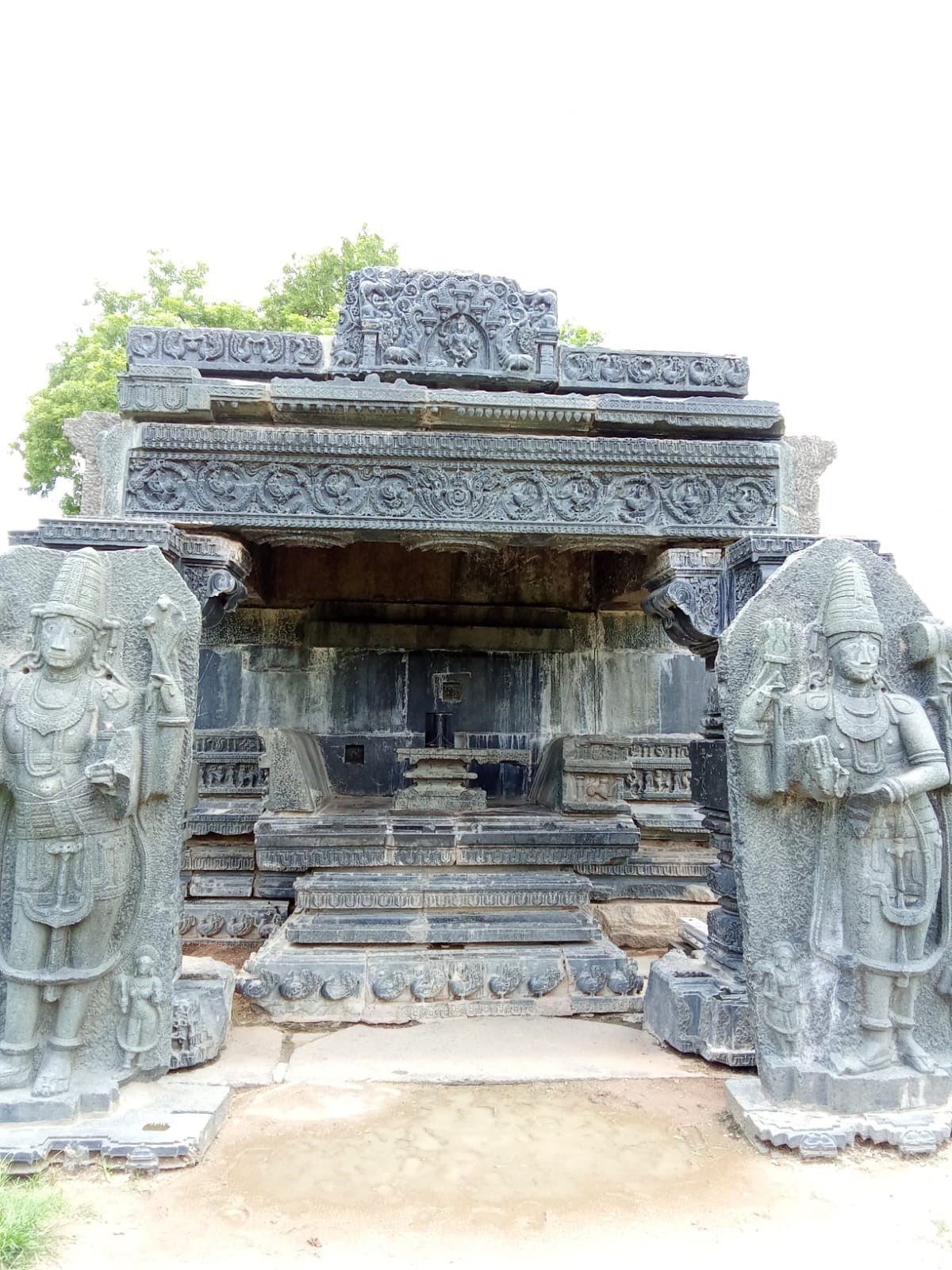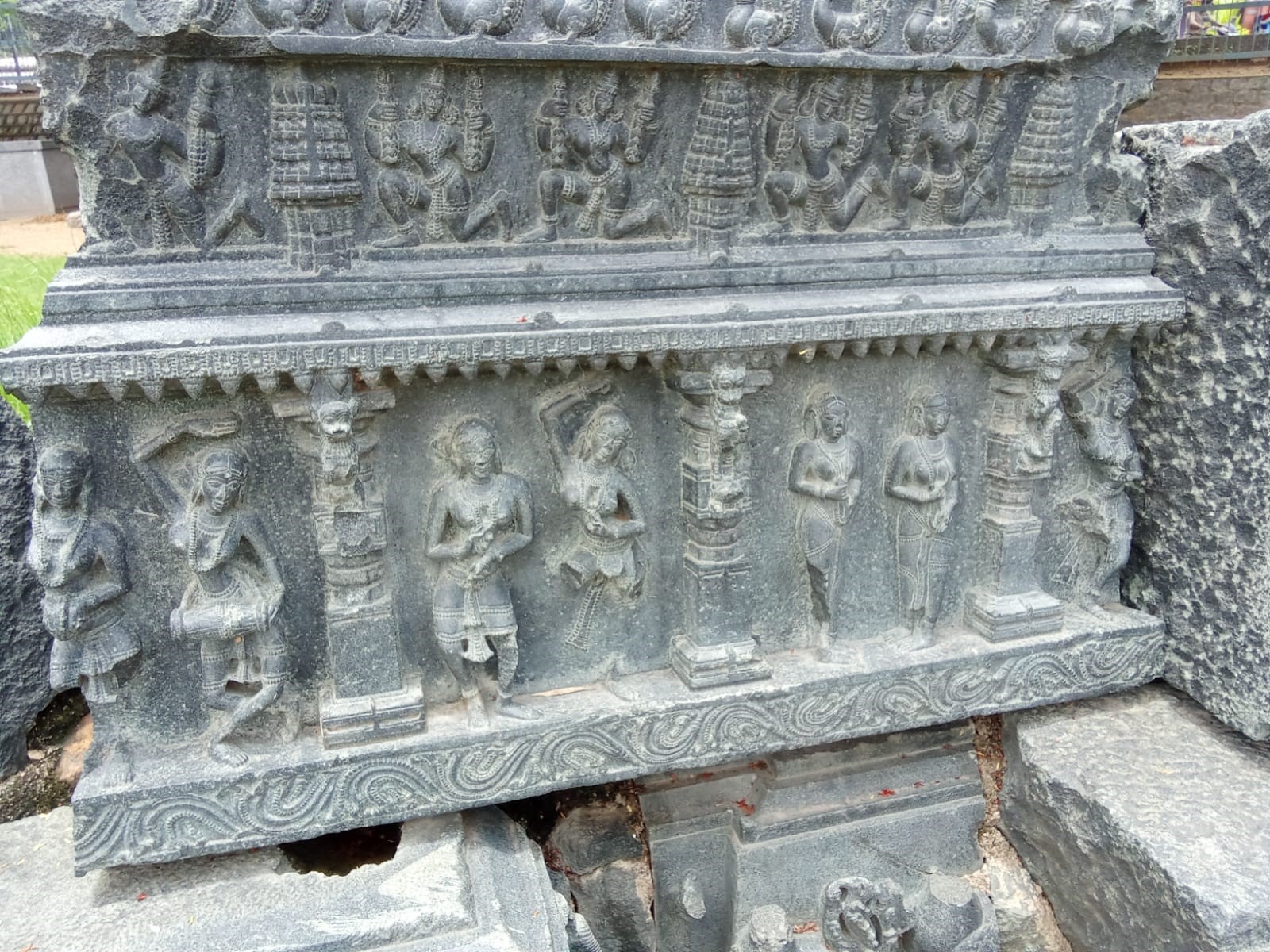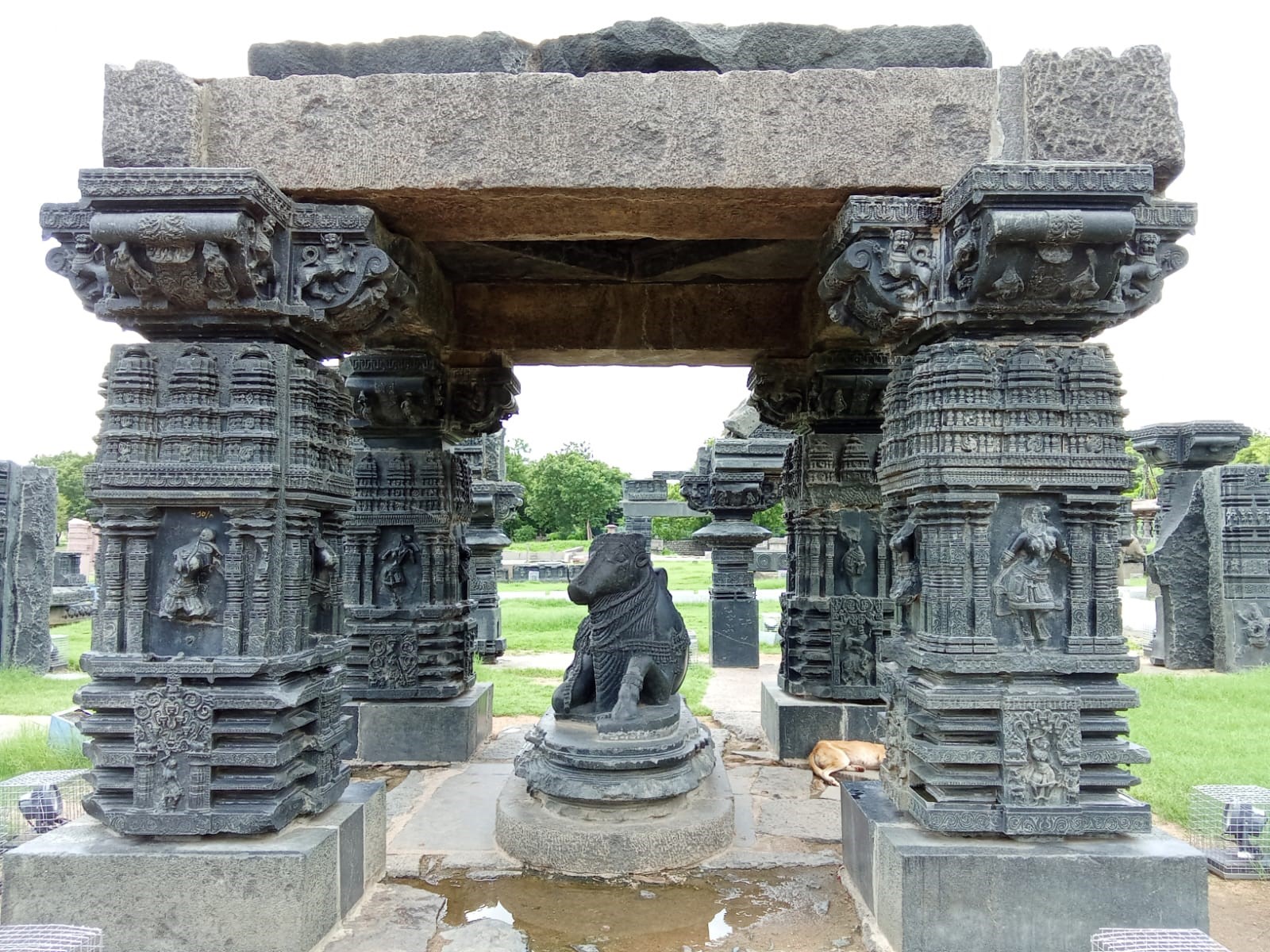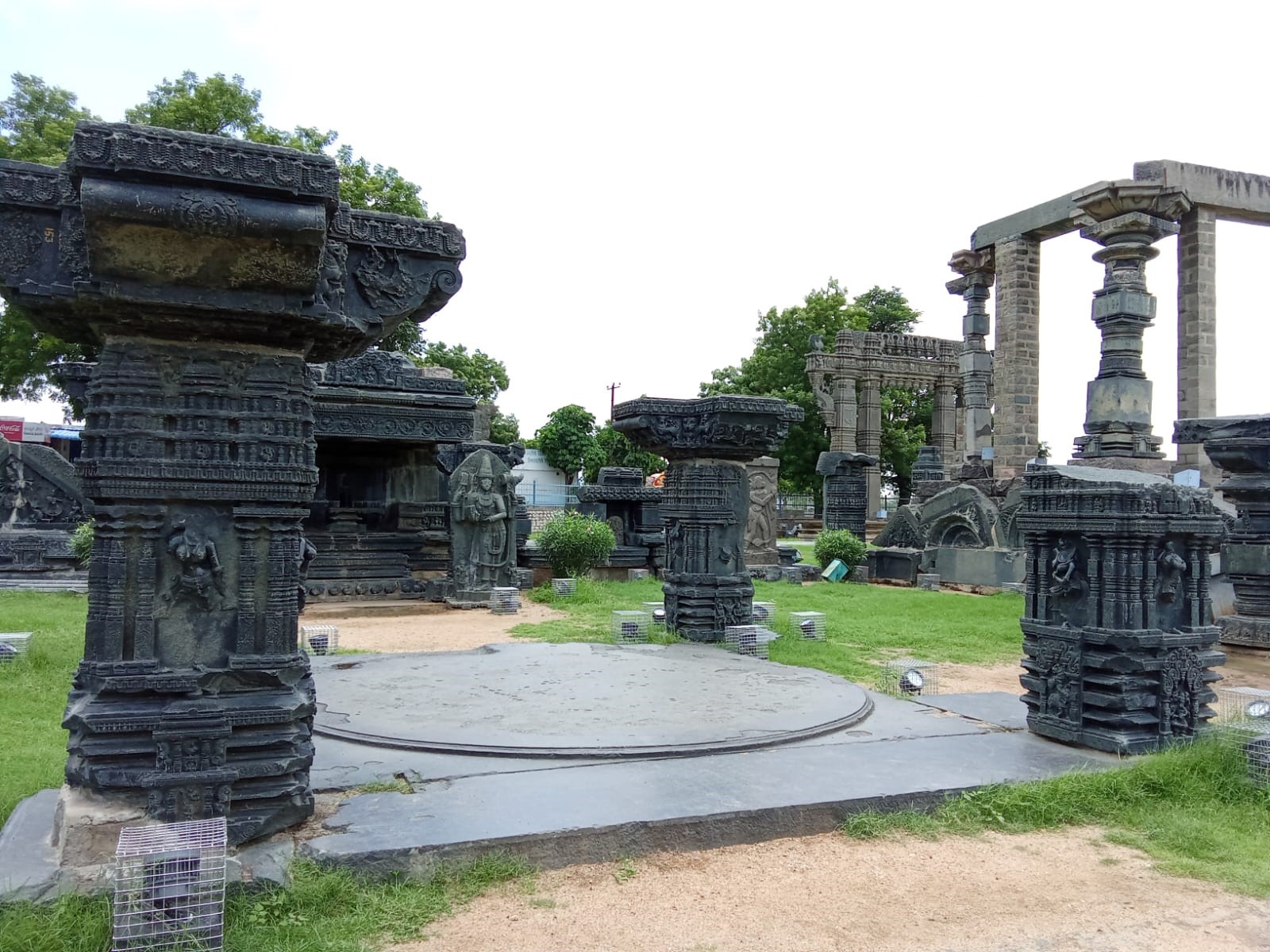Warangal Fort (Swayambhu Temple Complex)

Warangal Fort (Swayambhu Temple Complex)
Located in the heart of Warangal, the Swayambhu Temple stands as a remarkable testament to the architectural prowess of the Kakatiya dynasty. Dedicated to Lord Shiva, it serves as a spiritual center reflecting the religious fervor and cultural richness of medieval South India.
Architectural Significance
Distinctive Kakatiya Architecture:
The Swayambhu Temple exemplifies the unique Kakatiya architectural style, characterized by intricate carvings and robust structures. The main temple, Ranga Mandapa, and Agra Mandapa showcase meticulous craftsmanship using granite and sandstone.



Iconography and Carvings:
The temple complex is adorned with intricate sculptures and carvings depicting mythological scenes, deities, and motifs typical of the Kakatiya era.

These artistic elements offer insights into religious beliefs and cultural practices prevalent during that period.

Spatial Organization:
The temple complex is strategically organized, featuring separate mandapas for rituals and congregational gatherings. This spatial planning reflects architectural ingenuity aimed at enhancing the spiritual experience of devotees.

Historical Context and Cultural Significance
Kakatiya Dynasty:
Founded in the 12th century, the Kakatiya dynasty flourished under rulers like Prola, Rudradeva, Ganapatideva and Queen Rudrama Devi, known for their patronage of arts and architecture. The construction of the Swayambhu Temple under Rudrama Devi's patronage symbolizes the dynasty's cultural and religious contributions.
Spiritual and Cultural Hub:
During the Kakatiya period, the Swayambhu Temple served as a vibrant spiritual and cultural hub. Dedicated to Lord Shiva, it attracted pilgrims and devotees from far and wide, fostering religious harmony and cultural exchange. The temple played a pivotal role in promoting and preserving Shaiva traditions and rituals, reflecting the deep religious devotion of the Kakatiya dynasty.
Archaeological Insights:
Archaeological excavations have uncovered inscriptions and artifacts that shed light on the temple's historical significance, rituals, and societal practices. These findings contribute significantly to our understanding of medieval South Indian society and its religious landscape.
Insights:
The Swayambhu Temple stands as a beacon of Kakatiya heritage, embodying the dynasty's artistic brilliance and religious devotion. Through its architecture and historical significance, it remains a vital link to the rich cultural tapestry of medieval South India, inspiring admiration and scholarly inquiry.
Did you like this ?